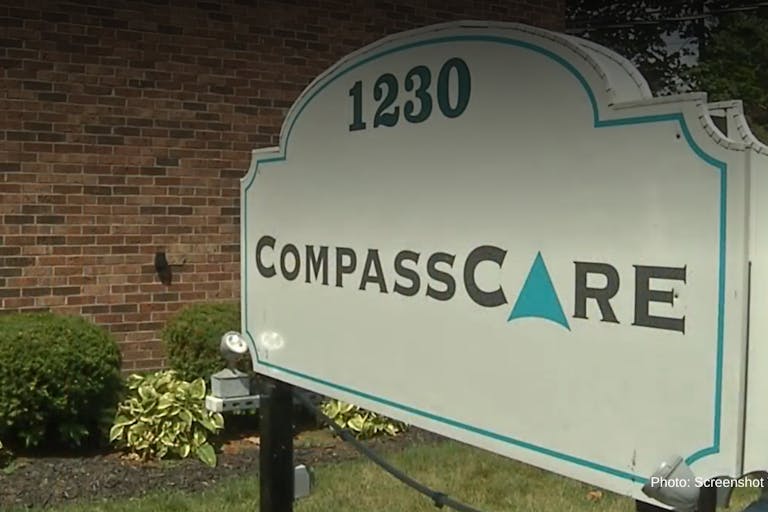
Study finds pregnancy centers offer better care than abortion facilities
Michael J. New
·
Surprise! Condoms may actually increase teen pregnancy
Everybody knows that if pro-lifers were really serious about reducing abortions, they’d be throwing free condoms at everybody, right? To hear many in the mainstream press tell it, this is settled science that only a religious extremist or partisan hack could possibly deny.
Well, Live Action readers know that conventional wisdom is bunk, and now Emma Green at the Atlantic—not exactly a hotbed of anti-abortion, theocratic, or right-wing propaganda—reports on a new study that pokes a big hole in it too…
According to a study published this month, over the course of just a few years, 22 districts in 12 states implemented this kind of program, affecting roughly 484 schools. In about two-thirds of the schools, kids had to go through mandatory counseling to get the condoms.
Condom access didn’t decrease the rate of teen births, though. It seems, in fact, to have increased it. The researchers estimate that these programs were responsible for roughly two additional births per 1,000 teens. And this rate was significantly higher when students could get condoms without any counseling. The effects would have been even greater if condoms were freely available to the entire U.S. high-school-age population, the researchers suggest—in that case, they projected, there would have been an additional five births per 1,000 teens.
What? You mean to tell me that teenagers are more likely to get pregnant when placing their hope in something with an 18% failure rate than they are not risking sex in the first place? Thank God we finally have a study to tell us what we couldn’t possibly have gleaned from basic common sense!

Of course, while acknowledging the wrench this throws into the “MORE CONDOMS EVERYWHERE” narrative, Green tries to suggest it’s “also troublesome for those who oppose sex education in schools,” because while “[e]asy access to condoms created worse outcomes for students, not better,” “it seems that lack of access to information may have hurt them even more”:
The debate over contraception distribution in schools often focuses on whether districts should only teach abstinence. In the schools included in this study, “counseling often included the message that abstinence is the safest method of protection against STIs,” wrote the researchers, Kasey Buckles and Daniel Hungerman of Notre Dame, in an email. But the programs weren’t necessarily geared toward abstinence—“in some cases, a counselor might be required to show how a condom is put on, and in other cases a counselor might be forbidden from doing that.” Opponents worry that this kind of show-and-tell, paired with easy access to condoms, encourages kids to have sex or engage in risky sexual behavior. The researchers speculated that the ’90s-era condom programs might have done exactly that.
Well, sure, just telling kids to be abstinent won’t do any good, but that’s a straw-man. The abstinence programs that have shown to be highly effective go in-depth enough to ensure that students understand why they should be abstinent. Another straw-man polluting the discussion is the idea that abstinence education somehow means denying the existence of birth control, when in reality of course a proper program addresses it; how else did you think it would teach students the risks and limitations of the various birth control methods, so that they understand there is only one foolproof solution?
Article continues below
Dear Reader,
In 2026, Live Action is heading straight where the battle is fiercest: college campuses.
We have a bold initiative to establish 100 Live Action campus chapters within the next year, and your partnership will make it a success!
Your support today will help train and equip young leaders, bring Live Action’s educational content into academic environments, host on-campus events and debates, and empower students to challenge the pro-abortion status quo with truth and compassion.
Invest in pro-life grassroots outreach and cultural formation with your DOUBLED year-end gift!
These trends have likely been driven by a number of factors, including new public-health policies. Recently, a number of programs have shifted their emphasis away from condoms and toward hormonal birth control. While condoms are still the most common kind of contraception used by teens, they have higher failure rates for preventing pregnancy than hormonal birth control. As the researchers in this study point out, girls also have less control over condom use than they do over something like the pill; they can make a long-term decision to get on birth control, rather than deciding whether or not to use a condom when they’re about to have sex.
That’s why some states and localities are pushing for wider distribution of other kinds of birth control, including long-acting reversible contraceptives, or LARCs. An initial study of one such program—Colorado’s Family Planning Initiative, founded in 2009—suggests it has reduced teen birth rates in the state by about 5 percent.
It is true that other contraceptives are more reliable than condoms, but it doesn’t follow that distributing them to teens is a good idea. As we covered here, there is a great deal of research corroborating the newest study’s conclusion that contraception distribution generally increases teen pregnancies rather than reducing them. In particular the CFPI study Green cites is largely worthless—it credited the program for a decline that started before it was implemented, failed to control for a wide range of variables in the groups it was comparing, and most importantly disregarded a decline nearly as large in counties that didn’t even have the program.
In April, we covered revelations that the pro-abortion Guttmacher Institute manipulated data to cover up the likelihood that Planned Parenthood’s promotion of LARCs in the mid-1990s contributed to an increase in unintended pregnancies.
Nobody is saying that condoms, LARCs, etc. don’t prevent any pregnancies; we’re saying that because our society is already so saturated in inexpensive, easily-obtainable birth control, the law of diminishing marginal returns has kicked in. Pretty much all that can be realistically prevented already is, and continuing to pour more into the country doesn’t address the behavioral reasons why unwanted pregnancies still happen; it just encourages more of the behavior that causes them in the first place.
Ultimately, the central fallacy of the abortion-on-demand, teen causal sex movement is simple: it’s billing its solutions as “safe” sex when really, all they’re doing is making promiscuity marginally less unsafe—while scoffing at the one guaranteed way to be fully safe.
Live Action News is pro-life news and commentary from a pro-life perspective.
Contact editor@liveaction.org for questions, corrections, or if you are seeking permission to reprint any Live Action News content.
Guest Articles: To submit a guest article to Live Action News, email editor@liveaction.org with an attached Word document of 800-1000 words. Please also attach any photos relevant to your submission if applicable. If your submission is accepted for publication, you will be notified within three weeks. Guest articles are not compensated (see our Open License Agreement). Thank you for your interest in Live Action News!

Michael J. New
·
Issues
Bridget Sielicki
·
Issues
Nancy Flanders
·
Politics
Bridget Sielicki
·
Issues
Sheena Rodriguez
·
Guest Column
Right to Life UK
·
Guest Column
Calvin Freiburger
·
Abortion Pill Reversal
Calvin Freiburger
·
Guest Column
Calvin Freiburger
·
Abortion Pill Reversal
Calvin Freiburger
·
Activism
Calvin Freiburger
·